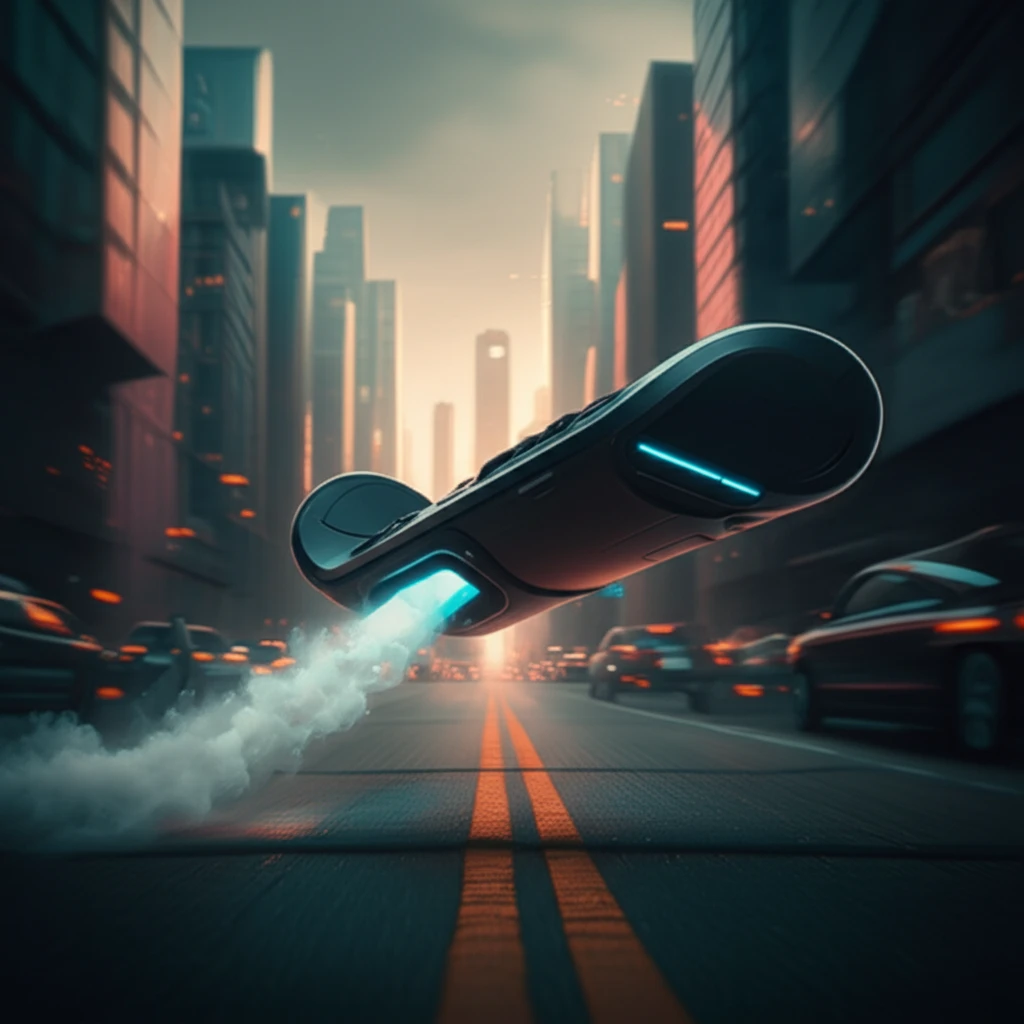
Hoverboards: The Future of Personal Transportation?
"Exploring the science and design behind making hoverboards a reality."
The hoverboard, long a staple of science fiction, represents the ultimate in personal transportation: a board that floats effortlessly above the ground. First seen in the 1989 film 'Back to the Future Part II,' the idea has captured the imagination of generations. But despite significant technological advancements, a true, universally functional hoverboard remains elusive.
Past attempts have largely fallen into two categories: limited-function prototypes or outright hoaxes. Some designs only work on metallic surfaces, while others are prohibitively expensive and offer very limited run times. The challenge lies in creating a device that is portable, energy-efficient, and capable of operating on a variety of surfaces.
This article explores an innovative approach to hoverboard design, focusing on the use of pressurized vapor to generate lift. By examining the necessary components, the principles of operation, and the potential challenges, we will assess the feasibility of this design and consider the future of hoverboard technology.
The Pressurized Vapor Hoverboard: Design and Components

The core concept behind this hoverboard design is harnessing the power of pressurized vapor to create lift. This approach prioritizes the use of readily available resources and a portable design. The key components include a pressure vessel, a heating system, a power source, and a carefully designed nozzle system.
- Cylindrical Pressure Vessel: This vessel, ideally constructed from Alloy C-276 for corrosion resistance, would hold approximately 20 liters of water and withstand pressures up to 6,000 PSI. It would also incorporate four pressure relief valves that activate at 2,575 PSI for safety.
- Flat Zigzag Heating Coils: Made from lightweight, corrosion-resistant titanium, these coils would efficiently heat the water within the pressure vessel. Their flat, zigzag design ensures even heat distribution.
- High Power Density Battery: Lithium Thionyl Chloride (LiSOCl2) batteries are chosen for their high energy density (500-700 Wh/kg), minimizing weight and volume.
- Carbon Fiber Deck: Replacing traditional wood, a carbon fiber deck provides superior strength at a significantly reduced weight (approximately 560 grams).
The Future of Hoverboard Technology: Challenges and Opportunities
The design outlined in this paper presents a viable path toward creating a functional hoverboard. By using readily available water and harnessing the power of pressurized vapor, this approach overcomes some of the limitations of previous designs.
However, significant challenges remain. These include:
<ul> <li><b>Start-up Time:</b> The current model requires a minute to heat the water, leading to wasted energy. A thermally insulated vessel could reduce this time.</li> <li><b>Fuel Consumption:</b> Water runs out quickly. Researching alternative materials that produce high pressure with less consumption is crucial.</li> <li><b>Aerodynamics:</b> Improving the board's aerodynamics can reduce air friction.</li> </ul>
